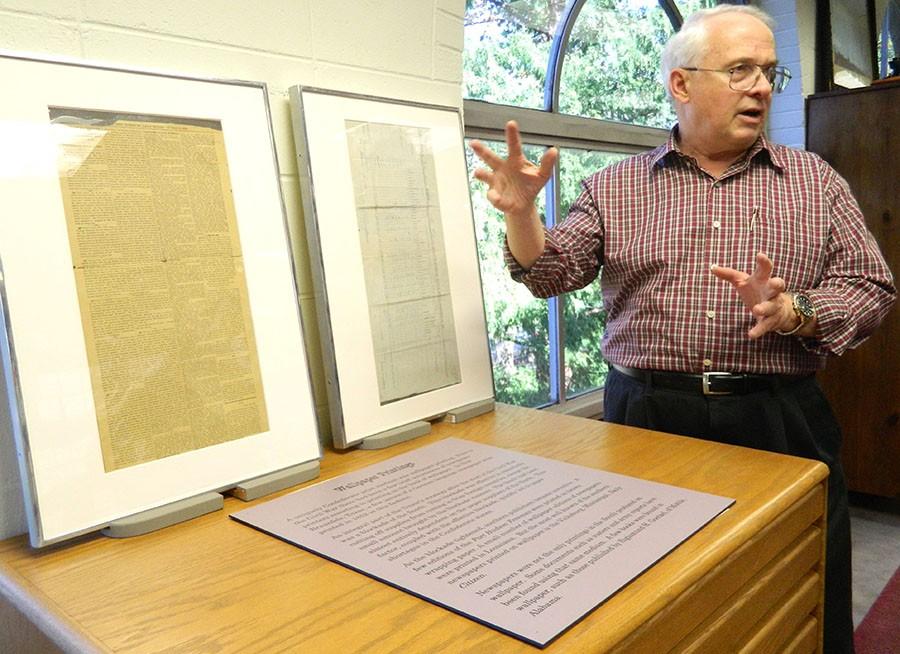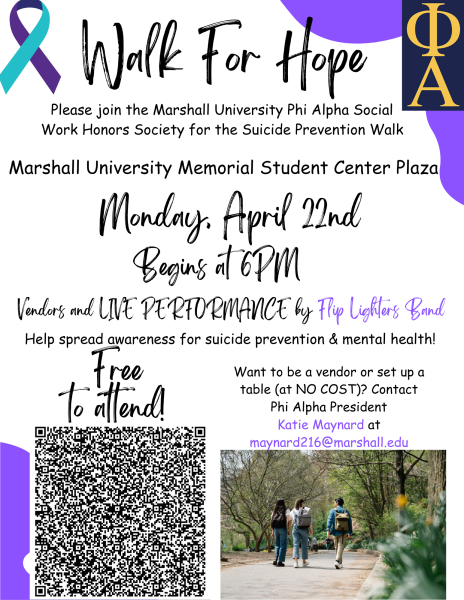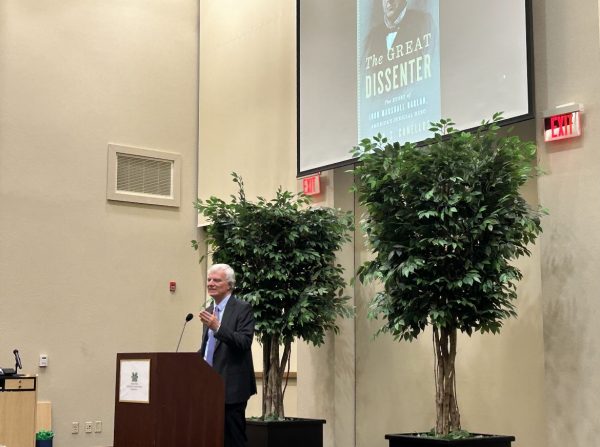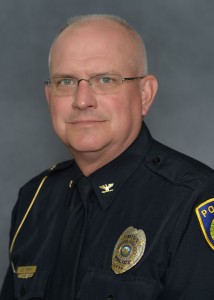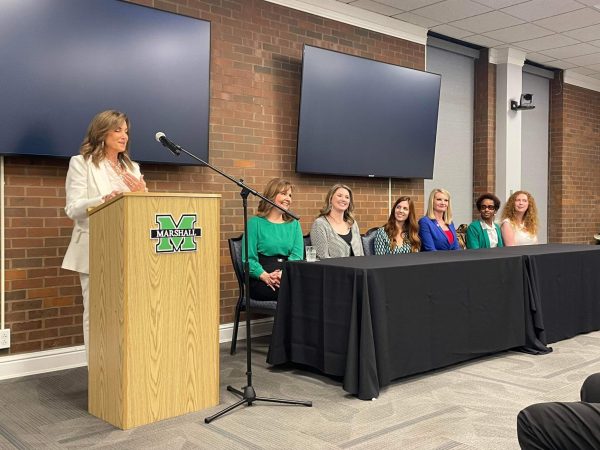Confederate history lives on in Morrow Library
More stories from Riley Mahoney
Confederate bibliographer Jack Dickinson showcasing an item featured in the Rosanna Black Library of Confederate History located in Morrow Library.
The Rosanna Blake Library of Confederate History in Morrow Library on Marshall University’s campus first arrived in 1987 under the terms of Rosanna Blake’s will.
When the collection came to Marshall in 1987, the university invited two well-known bibliographers and historians to come and look at the collection and they declared that it was one of the top four or five in the United States for southern and Confederate materials outside of the national archives.
“When Rosanna Blake was 10 years old her mother got her a little book on Robert E. Lee that got her started,” said Jack Dickinson, Confederate bibliographer at Morrow Library. “She became infatuated with Robert E. Lee and she wanted to only collect Robert E Lee material.”
With Robert E. Lee material being very rare and expensive, Blake decided to branch out into the rest of the Confederacy and the southern states. However, according to Dickinson, Blake started seriously collecting after she got her law degree.
The Civil War room in Morrow is where the collection is housed. In the room one can find everything from Civil War weapons to sheets of music such as “Bonnie Blue Flag” that were popular in the Confederate states during the war.
“She loved going after first editions of music,” Dickinson said.
The room also houses photographs and first edition books. Dickinson said Blake was always searching for the best things to add to her collection.
“She went out aggressively to go out and to buy first editions of books from the Civil War,” Dickinson said. “She also collected Confederate imprints which are things printed by the confederate government during the war.”
Also among the collection are two wallpaper printings from the southern Confederate states. “Wallpaper printings were a thing in the south that were invented out of necessity,” Dickinson said.
When the North was blockading the South to cut it off from receiving supplies from the north, one of the first things to become scarce was paper to print newspapers. According to Dickinson, to compensate for the shortage of paper, printing companies would use whatever they could find.
“What they did in a couple of cities was they went to warehouses and found great rolls of wallpaper and printed their newspapers on wallpaper,” Dickinson said.
Although the wallpaper printings in Marshall’s collection are not the first they are still very valuable according to Dickenson.
“Wallpaper newspaper goes from $25,000 to $30,000 a page. These aren’t the first ones, but they are still rare and valuable,” Dickinson said.
The rarest and most expensive thing in the collection is the Volck Shield, which is locked in the vault of the library. The Volck Shield is by Adalbert J. Volck and is a shield that is dedicated to the women of the Confederacy. The shield is inscribed with the words “To the brave women of the South.”
“There were only three made, and one is in the museum of the Confederacy, one is in the Maryland Historical Society and we have the third one,” Dickinson said.
In addition to housing many historical artifacts ,the collection also houses books of official records of soldiers that fought in the Civil War.
“I get all the Civil War questions flowing through Marshall University,” Dickinson said. “Mainly it’s people asking their ancestors and trying to figure out if they had an ancestor that fought in the Civil War.”
Many people, when tracing back their family genealogy, use the records Morrow has to help them. Morrow holds a significantly large collection so it makes sense for people to go there for help.
“I get emails that say their great grandpa was in the 54th New York infantry and I can at least tell them when that unit was formed and who the officers were and a few things like that,” Dickinson said. “There are three classes of patrons that use this collection. Group one is students and graduate students that may be writing a paper or they’ve been assigned something on the Civil War. The second group is the genealogists and family history people. The third group is the serious historians and famous Civil War writers.”
Dickinson said the item he finds the coolest is the ambrotype of Bishop Whalley, who was the Catholic Bishop in Wheeling, West Virginia at the time of the war.
“When the war started, one company of the Union Army told the Bishop that he had to raise the American flag over his church and he said, ‘No, I’m not going to do that. I never raised the other flag and I’m not going to raise yours.’ So they threw him in jail and there was a gigantic protest, people rose up in arms until they turned him loose,” Dickinson said.
The ambrotype was made before the Bishop got on a ship to leave the country to go to the Vatican.
The collection is also home to a painting of the last meeting between General Robert E. Lee and General Stonewall Jackson before the Battle of Chancellorsville, where Jackson was mortally wounded in action.
Morrow Library invites students to come and explore the Rosanna Blake Library of Confederate History and all of the other exhibits it houses.
Riley Mahoney can be contacted at [email protected].
Your donation will help continue the work of independent student journalism at Marshall University. If you benefit from The Parthenon's free content, please consider making a donation.


